Hadoop vs MapR
May 26, 2023 | Author: Michael Stromann
18
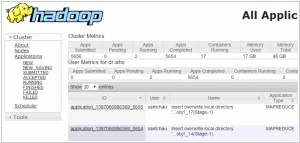
The Apache Hadoop software library is a framework that allows for the distributed processing of large data sets across clusters of computers using simple programming models. It is designed to scale up from single servers to thousands of machines, each offering local computation and storage. Rather than rely on hardware to deliver high-availability, the library itself is designed to detect and handle failures at the application layer, so delivering a highly-available service on top of a cluster of computers, each of which may be prone to failures.
5
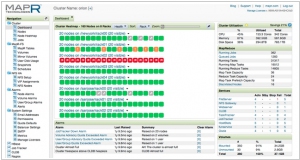
The MapR Distribution for Apache Hadoop provides organizations with an enterprise-grade distributed data platform to reliably store and process big data. MapR packages a broad set of Apache open source ecosystem projects enabling batch, interactive, or real-time applications. The data platform and the projects are all tied together through an advanced management console to monitor and manage the entire system.
Hadoop and MapR are both distributed data processing frameworks that share similar origins but have evolved differently in terms of architecture, features, and product offerings.
Hadoop is an open-source framework that consists of the Hadoop Distributed File System (HDFS) for distributed storage and the MapReduce processing model for distributed data processing. It provides a scalable and fault-tolerant infrastructure for processing large datasets in a parallel and distributed manner. Hadoop has a vast ecosystem of tools and technologies built around it, including Hive, Pig, Spark, and others, offering a wide range of data processing and analysis capabilities.
MapR, on the other hand, started as a commercial distribution of Hadoop that aimed to enhance Hadoop's reliability, performance, and ease of use. MapR introduced its own file system called MapR File System (MapR-FS), which is a fully distributed file system with built-in high availability and disaster recovery features. MapR also provides additional features like real-time data streaming, advanced security, and containerization support. These enhancements make MapR suitable for organizations with stringent performance and reliability requirements.
One significant difference between Hadoop and MapR lies in their underlying file systems. While Hadoop uses HDFS, MapR utilizes its own MapR-FS, which has several advantages such as improved performance, better scalability, and greater flexibility in terms of data management. MapR also offers integrated support for other data processing engines like Apache Spark and Apache Drill, enabling users to leverage a variety of processing tools within a unified platform.
Another distinction is the level of commercial support and enterprise-grade features provided by MapR. MapR offers comprehensive support, management tools, and professional services to help organizations deploy, monitor, and optimize their big data infrastructure. Additionally, MapR provides security features like access controls, encryption, and auditing, which are essential for sensitive data environments.
See also: Top 10 Big Data platforms
Hadoop is an open-source framework that consists of the Hadoop Distributed File System (HDFS) for distributed storage and the MapReduce processing model for distributed data processing. It provides a scalable and fault-tolerant infrastructure for processing large datasets in a parallel and distributed manner. Hadoop has a vast ecosystem of tools and technologies built around it, including Hive, Pig, Spark, and others, offering a wide range of data processing and analysis capabilities.
MapR, on the other hand, started as a commercial distribution of Hadoop that aimed to enhance Hadoop's reliability, performance, and ease of use. MapR introduced its own file system called MapR File System (MapR-FS), which is a fully distributed file system with built-in high availability and disaster recovery features. MapR also provides additional features like real-time data streaming, advanced security, and containerization support. These enhancements make MapR suitable for organizations with stringent performance and reliability requirements.
One significant difference between Hadoop and MapR lies in their underlying file systems. While Hadoop uses HDFS, MapR utilizes its own MapR-FS, which has several advantages such as improved performance, better scalability, and greater flexibility in terms of data management. MapR also offers integrated support for other data processing engines like Apache Spark and Apache Drill, enabling users to leverage a variety of processing tools within a unified platform.
Another distinction is the level of commercial support and enterprise-grade features provided by MapR. MapR offers comprehensive support, management tools, and professional services to help organizations deploy, monitor, and optimize their big data infrastructure. Additionally, MapR provides security features like access controls, encryption, and auditing, which are essential for sensitive data environments.
See also: Top 10 Big Data platforms
Hadoop vs MapR in our news:
2019. HPE acquires big data platform MapR

Hewlett Packard Enterprises (HPE) has completed the acquisition of MapR Technologies, a leading distributor of a data analytics platform based on Hadoop. This strategic deal encompasses the transfer of MapR's technology, intellectual property, and expertise in domains such as AI, machine learning, and analytics data management. By incorporating MapR's portfolio, HPE aims to reinforce its existing offerings in the field of big data, complementing the BlueData software acquisition it made in November. BlueData's software facilitates a container-based approach for deploying and managing Hadoop, Spark, and other environments across bare metal, cloud, or hybrid platforms. The inclusion of the MapR platform brings additional capabilities for running distributed applications, including storage APIs such as S3 API, along with APIs for HDFS, POSIX, NFS, and Kafka.
2015. MapR tries to separate from Hadoop
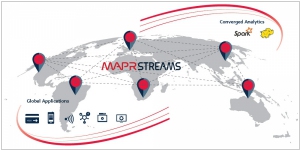
MapR is among the companies operating on the open-source Hadoop platform, facing competition in this domain. To establish a distinctive position among its well-established competitors, MapR has unveiled a new product called MapR Streams. This innovative offering enables the continuous processing of data, allowing for the creation of custom offers by feeding consumer data to advertisers or the distribution of health data to medical professionals to personalize medication and treatment options. These capabilities operate in near real-time, empowering customers to share data sources with individuals or machines that require access to such information through a subscription-based model. For instance, a maintenance program could subscribe to data streams from a manufacturer's shop floor, acquiring insights on usage, production, bottlenecks, and wear and tear. Alternatively, IT departments could subscribe to data streams containing log information, enabling them to detect anomalies that indicate maintenance issues or security breaches.
2015. MapR adds Apache Drill to its Hadoop distribution
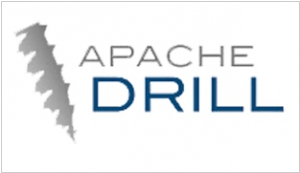
MapR has recently announced that its Hadoop distribution now includes Apache Drill, an open-source SQL query engine designed for Hadoop and NoSQL environments. Apache Drill offers low-latency capabilities, making it easier for end users to interact with diverse data sources, including legacy transactional systems, Internet of Things (IoT) sensors, web click-streams, and semi-structured data. Furthermore, it provides compatibility with popular business intelligence (BI) and data visualization tools. The inclusion of Apache Drill 1.0 in MapR's distribution grants users free access to this powerful tool. As a result, competitors like Hortonworks, who have contributors involved in the Apache Drill project, can also consider incorporating it into their own distribution if they find it valuable.
2015. MapR revamps its Hadoop platform with more real-time analytics
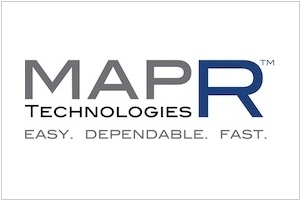
The most recent version of the enterprise-grade distributed Hadoop data platform MapR is specifically designed for the modern data-centric enterprise, emphasizing real-time capabilities. Its advanced features include table replication, which enables the simultaneous updating of multiple instances in different locations while ensuring synchronized changes across them. The ability to respond promptly to real-time business needs and offer the right solutions is crucial. Failure to do so not only means missed opportunities but can also pose a threat to a company's sustainability. This is one of the reasons why some enterprises are opting for MapR instead of traditional relational database management systems (RDBMS). MapR provides a comprehensive solution that combines a highly regarded NoSQL database and Hadoop in a convenient package. Unlike competitors such as Hortonworks and Cloudera, MapR stands out as a software company focused on simplifying the implementation of big data solutions, making it more accessible and user-friendly.
2014. MapR partners with Teradata to reach enterprise customers
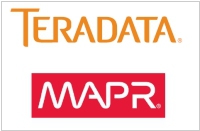
The last remaining independent Hadoop provider, MapR, and the prominent big data analytics provider, Teradata, have joined forces to collaborate on integrating their respective products and developing a unified go-to-market strategy. As part of this partnership, Teradata gains the ability to resell MapR software, professional services, and provide customer support. Essentially, Teradata will act as the primary interface for enterprises that utilize or aspire to use both technologies, serving as the representative for MapR. Previously, Teradata had established a close partnership with Hortonworks, but it now extends its collaboration and analytic market leadership to all three major Hadoop providers. Similarly, earlier this week, HP unveiled Vertica for SQL on Hadoop, enabling users to access and analyze data stored in any of the three primary Hadoop distributions—Hortonworks, MapR, and Cloudera.
2014. HP plugs the Vertica analytics platform into Hadoop
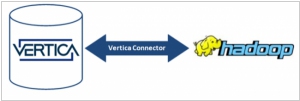
HP has unveiled the introduction of Vertica for SQL on Hadoop, a significant announcement in the world of analytics. With Vertica, customers gain the ability to access and analyze data stored in any of the three primary Hadoop distributions: Hortonworks, MapR, and Cloudera, as well as any combination thereof. Given the uncertainty surrounding the dominance of a particular Hadoop flavor, many large companies opt to utilize all three. HP stands out as one of the pioneering vendors by asserting that "any flavor of Hadoop will do," a sentiment further reinforced by its $50 million investment in Hortonworks, which currently represents the favored Hadoop flavor within HAVEn, HP's analytics stack. HP's announcement not only emphasizes the platform's interoperability but also highlights its capabilities in dealing with data stored in diverse environments such as data lakes or enterprise data hubs. With HP Vertica, organizations gain a seamless solution for exploring and harnessing the value of data stored in the Hadoop Distributed File System (HDFS). The combination of Vertica's power, speed, and scalability with Hadoop's prowess in handling extensive data sets serves as an enticing proposition, potentially motivating hesitant managers to embrace big data initiatives confidently. HP's comprehensive offering provides a compelling avenue for organizations to unlock the potential of their data, urging them to venture beyond their reservations and embrace the world of big data.
2014. Cloudera helps to manage Hadoop on Amazon cloud
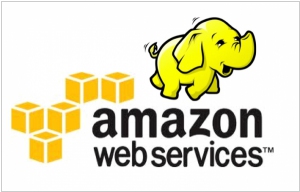
Hadoop vendor Cloudera has unveiled a new offering named Director, aimed at simplifying the management of Hadoop clusters on the Amazon Web Services (AWS) cloud. Clarke Patterson, Senior Director of Product Marketing, acknowledged the challenges faced by customers in managing Hadoop clusters while maintaining extensive capabilities. He emphasized that there is no difference between the cloud version and the on-premises version of the software. However, the Director interface has been specifically designed to be self-service, incorporating cloud-specific features like instance-tracking. This enables administrators to monitor the cost associated with each cloud instance, ensuring better cost management.


